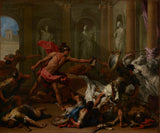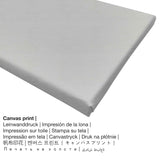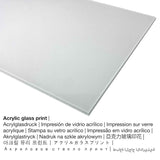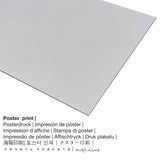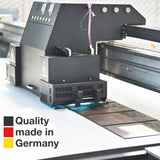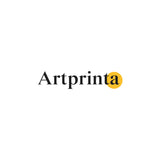Sebastiano Ricci, 1710 - Perseus na-emegide Phineus na Onye isi Medusa - mbipụta nka mara mma.
Ụtụ gụnyere. Mbupu gbakọrọ na ndenye ọpụpụ.
Nchịkọta nke ihe osise nka nke eserese "Perseus Confronting Phineus with the Head of Medusa"
Ihe nka nka Perseus Confronting Phineus with the Head of Medusa mere site na Baroque painter Sebastiano Ricci in 1710. N'oge a, a na-etinye ihe osise na ihe osise Ụlọ ihe ngosi nka nke J. Paul Getty mkpokọta nka dị na Los Angeles, California, Njikota Obodo Amerika. Site n'ikike nke - Ụlọ ihe ngosi nka nke J. Paul Getty (nwere ikike - ngalaba ọha).Ihe kredit nke ọrụ nka bụ: . Ọzọkwa, alignment bụ odida obodo and has a side ratio of 1.2 : 1, meaning that the length is 20% longer than the width. The painter Sebastiano Ricci was a European artist, whose art style can be classified as Baroque. The Italian artist lived for 75 afọ - a mụrụ n'afọ 1659 na Belluno, mpaghara Belluno, Veneto, Italy ma nwụọ na 1734.
Additional artwork information from The J. Paul Getty Museum website (© Copyright - by The J. Paul Getty Museum - www.getty.edu)
In Greek mythology, the hero Perseus was famous for killing Medusa, the snake-haired Gorgon whose grotesque appearance turned men to stone. This painting, however, shows a later episode from the hero's life. At Perseus's and Andromeda's wedding, their nuptials were interrupted by a mob led by Phineus, a disappointed suitor. After a fierce battle, Perseus finally triumphed by brandishing the head of Medusa and turning his opponents into stone.
Sebastiano Ricci depicted the fight as a forceful, vigorous battle. In the center, Perseus lunges forward, his muscles taut as he shoves the head of Medusa at Phineus and his men. One man holds up a shield, trying to reflect the horrendous image and almost losing his balance. Behind him, soldiers already turned to stone are frozen in mid-attack. All around, other men have fallen and are dead or dying. Ricci used strong diagonals and active poses to suggest energetic movement.
Iberibe tebụl nka
| Aha ọrụ nka: | "Perseus Confronting Phineus with the Head of Medusa" |
| Nhazi nka: | sere |
| Otu sara mbara: | nka ochie |
| Century: | 18th narị afọ |
| Afọ okike: | 1710 |
| Ogologo afọ nka nka: | ihe dị ka afọ 310 |
| Egosiputara na: | Ụlọ ihe ngosi nka nke J. Paul Getty |
| Ebe ngosi nka: | Los Angeles, California, Njikota Obodo Amerika |
| URL webụ: | Ụlọ ihe ngosi nka nke J. Paul Getty |
| Ụdị nka nka: | ngalaba ọha |
| Site n'aka: | Ụlọ ihe ngosi nka nke J. Paul Getty |
Onye na-ese ihe
| Ihe nkiri: | Sebastiano Ricci |
| A makwaara dịka: | Bastian Ricci, S. Ricchi, Sebastian Ritcher, S. Ricci, Sebn. Ricci, Sebastiano Rizzi, Sab. Ricci, Sebast. Ricci, sebastino ricci, Seb. Ritchi, Seb. Riccio, Sebastian Ricci. -- Ven., Seb. Rizzi, Sebastian Rijtzi, Rissi, Sebastian Ricci, Sebastian Richi, Bastian Rizzi, B. Ricci, Sib. Ricci, Richter Sebastian, Bastiano Ricci, Sebastian Picce, Sabastian Ricci, Rici Sebastiano, Seb Ricci, Sébastien Ricci, Sabastian Rici, Ricci Sebastiano, ricci sebastian, Ricci S., Seb. Ricchi, Sebastiano Ricchi, Sebas. Ricci, Sebastien Rici, Ricci Seb., S Ricci, Sebr. Ricci, Rizzi Sebastiano, Seb. Ricci, Rizzo Sebastiano, Ricci B., S. Bastein Ricci, Ricci Sebastiane, Sebastien Rixi, Sebastiano Ricci, Seb. Recci, Sabastian Ricie, Ricci, Seb: Ricci, Rizzi, ricci s., Ricchi, Ricci Sebast., Ricchi Sebastiano, Sebastian Ritzi, Sebastin Ricci, Sebastian Rizzi, S Ricci |
| okike onye nka: | nwoke |
| Obodo onye nka: | Italian |
| Ọrụ: | onye na-ese ihe |
| Country: | Italy |
| nhazi ọkwa: | nna ukwu ochie |
| Ụdị nka: | Baroque |
| Nwụrụ anwụ: | 75 afọ |
| Afọ ọmụmụ: | 1659 |
| Obodo: | Belluno, mpaghara Belluno, Veneto, Italy |
| Afọ ọnwụ: | 1734 |
| Ebe ọnwụ: | Venice, mpaghara Venezia, Veneto, Italy |
Họrọ ihe ị ga-achọ ka idowe na mgbidi gị
In the dropdown menu next to the product offering you can pick the size and materialaccording to your personal preferences. You can choose among the following product customization options:
- Mbipụta enyo acrylic: The print on acrylic glass, often labelled as a print on plexiglass, makes an original work of art into beautiful home decoration. Beyond that, the acrylic fine art print makes a viable alternative to canvas and aluminidum dibond prints. The artwork is being made thanks to the help of modern UV printing machines. The effect of this are intense, deep colors. With an acrylic glass art print contrasts as well as smaller color details become exposed because of the granular tonal gradation of the picture. The real glass coating protects your selected art print against light and heat for many years.
- Mbipụta kwaaji: The canvas direct print is a printed canvas mounted on a wooden frame. Canvas prints are relatively low in weight, meaning that it is easy to hang your Canvas print without additional wall-mounts. A canvas print is suited for all types of walls.
- Mbipụta aluminom (aluminium dibbond): Aluminium Dibond prints are metal prints with an outstanding effect of depth. Its non-reflective surface structure make a contemporary look. For the Direct Print On Aluminum Dibond, we print the selected artpiece onto the aluminium composite surface. The bright and white parts of the original work of art shine with a silky gloss, however without glow. Colors are luminous and bright, the fine details of the print are very clear, and the print has a a matte look you can literally feel. The print on Aluminum Dibond is one of the most popular entry-level products and is an extremely stylish way to display art reproductions, as it draws attention on the image.
- Mbipụta akwụkwọ mmado (akwa akwa akwa): The poster is a UV printed canvas paper with a nice finish on the surface, that resembles the actual artwork. Please note, that depending on the absolute size of the poster we add a white margin of something between 2-6cm round about the print, which facilitates the framing.
Banyere akụkọ
| Ụdị edemede: | ọrụ mgbidi |
| Mmeputakwa: | dijitalụ mmeputakwa |
| Usoro mmepụta: | Mbipụta UV ozugbo |
| Production: | emere na Germany |
| Stockdị ngwaahịa: | na mmepụta ihe |
| Eji ngwaahịa a chọrọ: | nka mgbidi, ihe ndozi mgbidi |
| Ntuziaka onyonyo: | usoro odida obodo |
| Oke akụkụ: | 1.2: 1 |
| Mmetụta akụkụ: | ogologo bụ 20% ogologo karịa obosara |
| Ụdị dị iche iche dị: | Mbipụta iko acrylic (nke nwere ezigbo mkpuchi iko), mbipụta akwa akwa, mbipụta akwụkwọ mmado (akwụkwọ kwaaji), mbipụta ọla (aluminium dibbond) |
| Mbipụta kanvas (akwa akwa n'elu etiti ihe ndọtị) ụdị nha dị iche iche: | 60x50cm - 24x20", 120x100cm - 47x39", 180x150cm - 71x59" |
| Mbipụta iko acrylic (nwere ezigbo mkpuchi iko) dị iche iche: | 60x50cm - 24x20", 120x100cm - 47x39", 180x150cm - 71x59" |
| Nhọrọ nha nke akwụkwọ mmado (akwụkwọ kwaaji): | 60x50cm - 24x20", 120x100cm - 47x39" |
| Nhọrọ mbipụta aluminom: | 60x50cm - 24x20", 120x100cm - 47x39" |
| Igwe onyonyo: | enweghị etiti |
Disclaimer: We try everythig possible in order to describe our products as accurate as possible and to display them visually in our shop. Still, some pigments of the print products and the printing may differ somehwat from the representation on the screen. Depending on the settings of your screen and the condition of the surface, color pigments may not be printed as exactly as the digital version depicted here. In view of the fact that all the art prints are printed and processed manually, there might as well be minor deviations in the motif's size and exact position.
Edochiri ederede a site na nwebiisinka © | www.artprinta.com (Artprinta)

